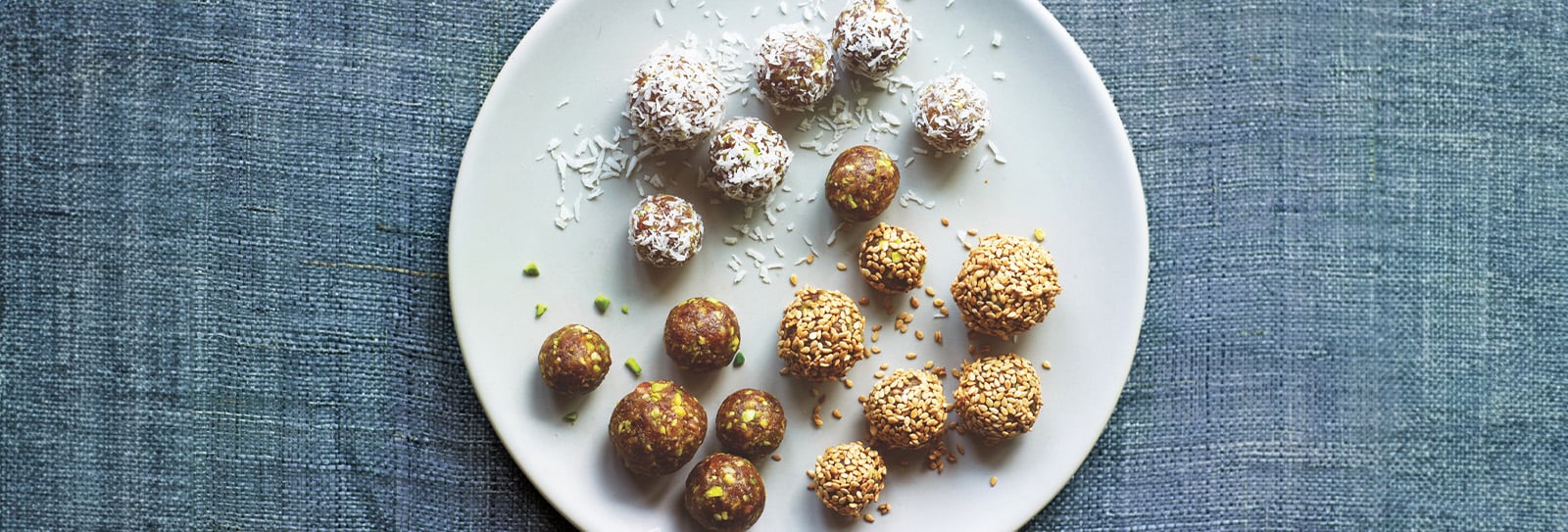
Flavors: Hais (Desert Energy Balls)
- Food
- Recipe
1
Recipe by Sarah al-Hamad
Photograph by Kate Whitaker
Al-Baghdadi wrote his hit medieval cookbook Kitab al-Tabikh (Book of Dishes) in 1226 CE at the height of Abbasid sophistication and power. It included this recipe for hais or date sweetmeats.
The dish has a long and illustrious history; it was thought even the Prophet Muhammad enjoyed it. More importantly, this simple no-bake, one-bite dessert was said to “fortify the traveler” in the days when travels, especially the arduous journey to the Hajj, were often perilous. The original recipe says to “make into cabobs,” which I took to mean small balls, but you could roll into finger-shaped sweetmeats or spread the mixture onto a baking sheet and cut into squares. Any which way, they are yummy and energizing.
Whiz the dates, almonds, pistachios and oil together in a food processor until ground and the mixture is resembling breadcrumbs.
Tip into a large bowl and shape into balls roughly the size of a walnut (they don’t need to be the same size). If still crumbly, dab your palm with a little vegetable oil to help bind the mixture. Place the balls in the fridge to set.
To finish, roll each ball in sesame seeds, coconut or pistachio slivers, if desired—the options are endless.
Adapted and reprinted with permission from Sun Bread and Sticky Toffee: Date Desserts From Everywhere
Sarah al-Hamad.
Interlink Books, 2013.
interlinkbooks.com.

You may also be interested in...

Flavors: Spicy Roasted Cauliflower (Zahra)
Food
Ma’aleh is usually deep-fried cauliflower, served in a sandwich with raw vegetables and tarator.
Flavors: Desi Breakfast Sandwich
Food
Desi Breakfast Sandwich - This recipe for breakfast contains long-lasting carbohydrates, protein and healthful fats to keep you fueled as long as possible.
Flavors: Date, Orange and Olive Oil Cake
Food
On one of famed chef Shane Delia's many trips to Morocco, some Bedouin men showed him how warming dates in olive oil before placing them in a tangine brings out the flavor of the caramel in the date, leading Delia to this recipe.